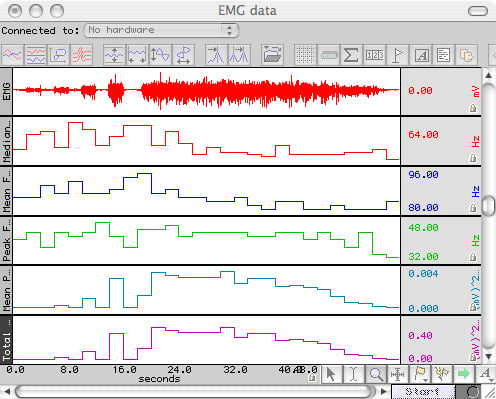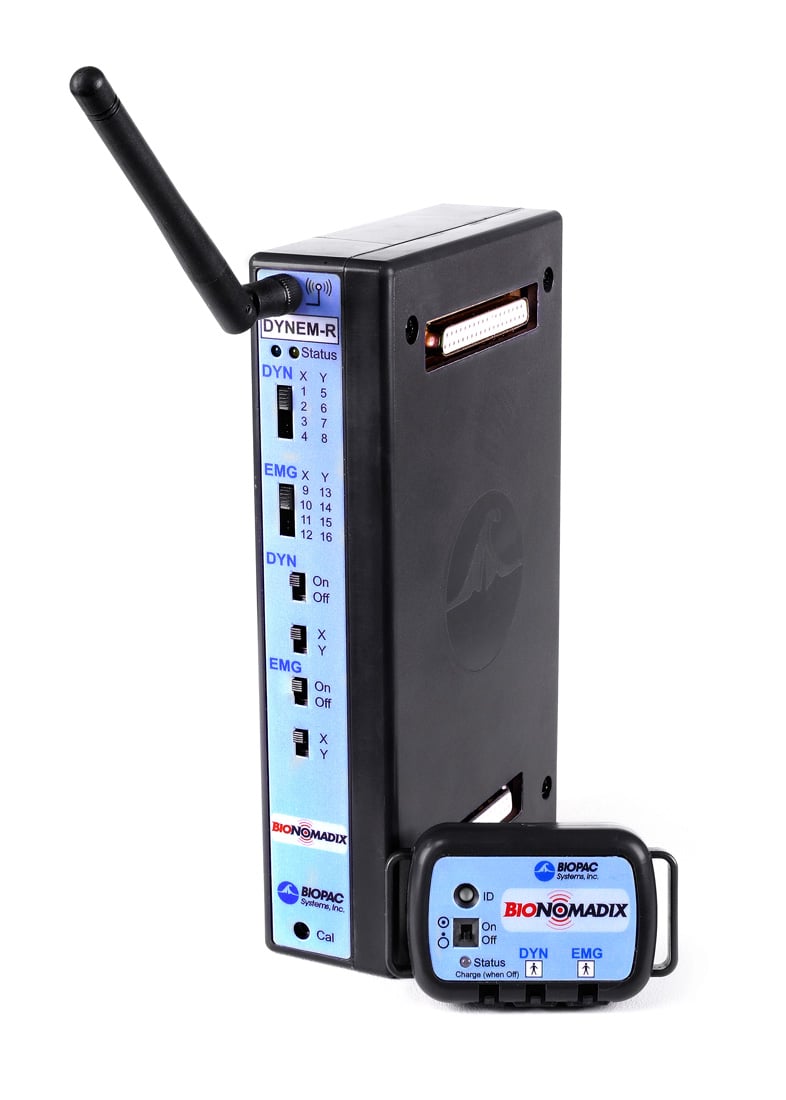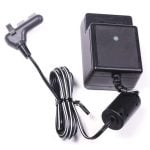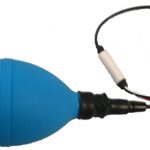The pair emulates a “wired” connection from the computer to subject, in terms of quality, but with all the benefits of a fully-wireless recording system.
Due to battery operation of the wireless transmitter and close proximity to the subject’s body, common-mode rejection ratio is extremely high, considerably in excess of any typical wired EMG or Dynamometry recording system.
The module set has a fixed gain of 2,000. Biopotential amplifier/transmitter signal to noise ratio is very high (in excess of 65 dB), as the noise floor of the amplifier/transmission system is only 1.5 µV rms (bandwidth of 5.0 Hz to 500 Hz). The matched transmitter/receiver pairs incorporate internal highpass and lowpass filters to provide for high-quality amplification of the EMG and Dynamometry waveforms. Due to the pair’s low bandwidth, notch filters to remove mains interference (50 or 60 Hz) are typically not required.
Use with a Clench Force Transducer (BN-CLENCH-XDCR).
Use AcqKnowledge to evaluate activation level and muscle recruitment order. The software can automatically integrate the raw EMG signal and provide a detailed frequency analysis of the EMG data. Wide bandwidth EMG data can be filtered to specific frequency ranges to accommodate high quality EMG signal identification even in the presence of extensive subject motion.

Interference with other recording modules or systems is greatly minimized because the transmitter is completely battery operated and operates totally independently of any other recording grounds or power sources. The recording transmitter is also extremely safe to use, because there is no physical connection to supply mains.
The transmitter attaches to the subject’s legs, arms, head or torso via stretchy Velcro strap, a stretch-mesh BioNomadix Shirt (see accessories), or Coban™ self-adhesive wrap (WRAP1). The exterior transmitter body dimensions (W x H x D) are approximately 6 cm x 4 cm x 2 cm and it weighs approximately 54 grams.
The transmitter’s battery can provide power for up to 72 hours of continuous operation.
The new BioNomadix series of wireless, wearable physiology monitoring devices for life science research are available for a wide range of signals, including ECG, EEG, EOG, EMG, EGG, Respiration, Pulse, Temperature, Electrodermal Activity, Impedance Cardiography, Accelerometry, and Gyro. BioNomadix are typically dual-channel units, offering either two of the same signal or a combination of signals.









Stay Connected